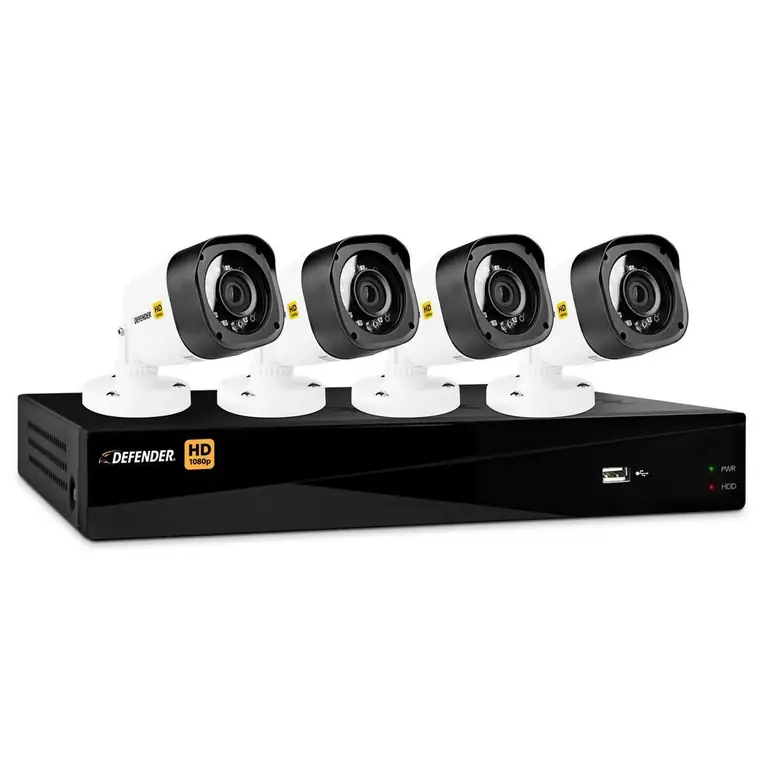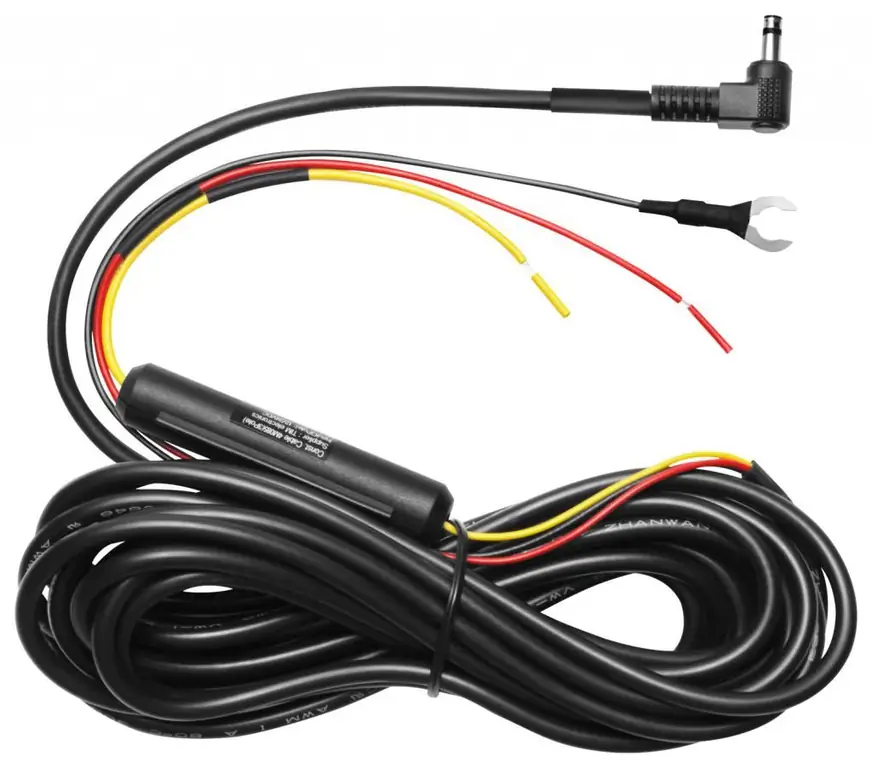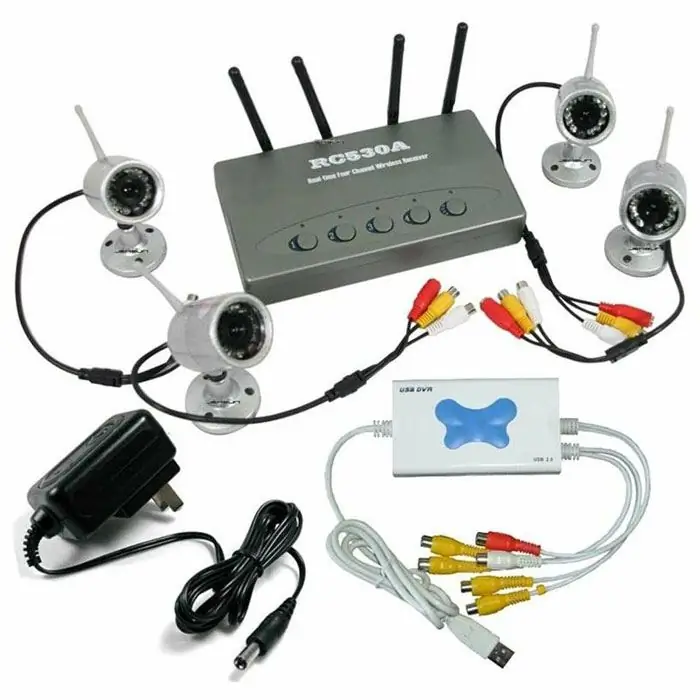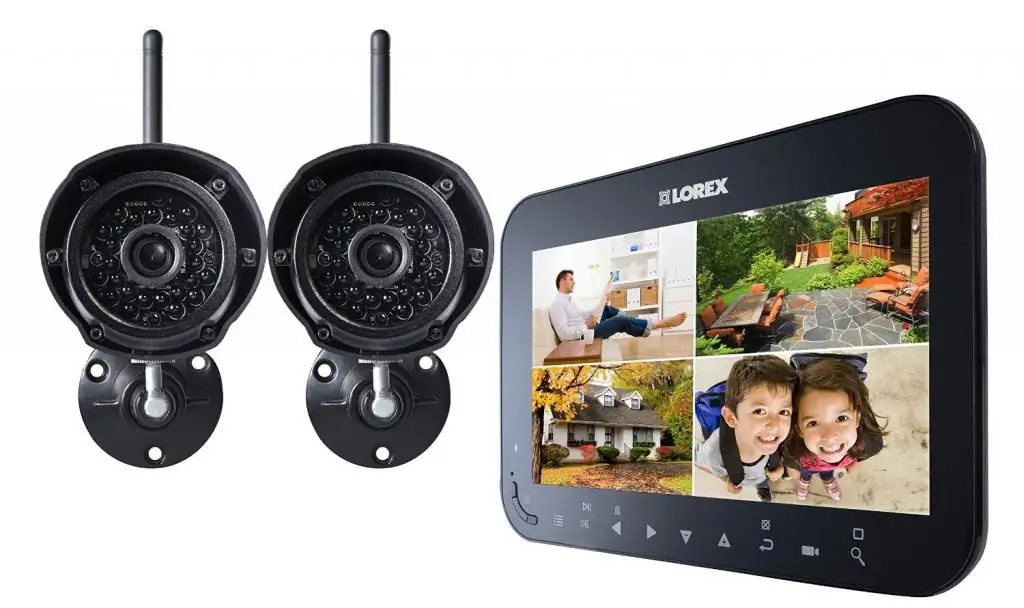Currently, video surveillance systems are an integral part of security in a variety of facilities, such as real estate - residential or commercial, or open areas. To professionally provide an object with a tracking system, you will need the help of specialists. However, if necessary, you can install a video surveillance system with your own hands.
The following is a description of some of the features of creating and using a video surveillance system and the equipment required for this. There is nothing particularly complicated in this, and therefore an ordinary user can set up a video surveillance system with his own hands.
To assemble the video surveillance kit yourself, you will need some items. These include electrical and RF cables or twisted pair, computer (server), router, storage device, power supplies, etc.
It should be noted that when installing a video surveillance system for your house or apartment, you can do without a DVR. The server function will be performed by an ordinary personal computer. Now overLet's take a closer look at how to make a video surveillance system with your own hands. So let's get started.

How to choose the right camera for your CCTV kit?
First, let's talk about the criteria by which you need to choose a camera so that it is best suited for certain operating conditions.
The camera must have a resolution, which is measured in Mp (megapixels). And the number of active pixel sensors that are placed on the video matrix determines this resolution. With their help, streams of light are converted into electrical impulses. After that, they are converted into an image on the screen.
This is provided by a special microchip. In addition, it is also an electronic jam. To receive an image in a certain Full HD 1920 × 1080 format, a 2.1 MP resolution is enough. It's easy to check. To do this, the number of dots must be multiplied by an inch.
In fairly large areas it will be very economical and profitable to use not one video camera, but several at the same time. They must have a resolution of Mp 1-2. Or one or two cameras with a resolution of 3-5 megapixels, which are suitable for places where detailed detail and image expansion will be needed.
Requires frame rates up to 30 FPS per second. If so-called still scenes are observed, when the object of observation is, for example, a parking lot, then a frequency of 8 FPS can be dispensed with. But when you need to follow the track with many cars - this, of course, is not enough,especially if you suddenly need to see the numbers of the car.
It is also necessary to take into account the light sensitivity of the camera (it is indicated in lx - lux). Cameras used at night should have a light sensitivity index starting from 0.01 lux, and at twilight - from 1 lux.
This indicator depends on the area of the sensor elements located on the matrix. The larger their surface, the greater the sensitivity required. However, microlenses can be used if necessary. They are placed between the sensors or above them. They help attract additional streams of light and improve the quality of image capture.

What are the types of cable routes and the method of laying them
In order for all components included in the video surveillance system to function properly, it is necessary to ensure the correct laying of cable routes. This is where the installation of the video surveillance system should begin.
Such routes are laid using twisted pair or coaxial cable. The first of them is a twisted pair cable, which is a cable with one pair of conductors or several, which are intertwined with each other. This binding provides a significant reduction in electromagnetic interference. This cable is commonly used to connect digital IP cameras.
Second - coaxial cable, single core. This is, in essence, an ordinary antenna cable. There is no need to install it on the line of additional video adapters. This cable has a reliable shielded protective coating,which significantly reduces the unwanted effects of electromagnetic interference. Both of these cables can be used for both indoor and outdoor installations.

How the cable is laid indoors
When installing cameras for video surveillance in a room, it is taken into account that there are no sudden and sharp changes in temperature. Therefore, it is permissible to use such cable channels, where it is possible to place not one, but several lines at a time. Such cable channels will not protect against severe mechanical damage. But on the other hand, they can completely hide all the wires, and they will not be visible at all.
Besides, in terms of fire safety, this gasket is exactly what you need. In the event that an aggressive impact of external factors on the object where the video surveillance system is located is possible, it is better to use a special corrugation to protect and preserve the cables.
To ensure that all cables are securely fixed, clamps are used that meet certain quality requirements. They will be able to fulfill their mission for several decades. Or you can firmly fix them with electrical tape when there is no need to maintain the aesthetics of the room. When cable lines are laid on wood floors or drywall, a stapler with special staples can be used to strengthen. This will not spoil the appearance of the room and will firmly fix the cable.

How the cable is laid on the street
For normalfunctioning outdoors, a special approach is needed for the installation of video surveillance systems with your own hands. This applies to the cable itself, and its laying. Two mounting methods can be used: closed and open.
The first one involves laying the cable in walls or underground. The second is by air, using electric poles or special supports, or pulling a cable along walls or fences. Only cable specifically designed for outdoor use is used.
When a broach is required from one building to another, and so that the material is not visible, it is placed underground inside a plastic pipe. To do this, it will be necessary to dig trenches. But in cases where the cable must be laid through the territory where traffic is carried out, it is necessary to use not plastic, but metal pipes. This is the only way to be sure that the data cable is protected.
If it stretches through the air, be sure to take into account the weather conditions (hurricane wind, thunderstorm, etc.). Be sure to provide the line with special insulation to protect against thunderstorms. Cable length should be up to 35-50 meters.

How cameras are mounted
With the help of a surveillance camera, a complete overview of the object should be provided. The camera itself should not be visible so that possible unwanted guests do not guess about its presence. And at the same time, it must be installed in such a way that, if necessary, access to it does not causeno problem.
To connect a digital video camera to a simple video surveillance system, you will need: a twisted pair cable, two RG-45 tips and a power cable. If a hybrid or analog camera is mounted, then a coaxial cable is used. It must be equipped with a tulip connector: one for power (red), the other two (yellow and white) for receiving a signal from the device.
Mounting elements must be strong and securely fix the camera. Be sure to minimize the risk of falling, as well as shaking and vibration. Those mounts that come with the camera are rarely reliable. Metal brackets are not suitable for installation. Also, do not install them on metal surfaces. Indeed, in the event of a thunderstorm, the camera can become a lightning rod.

How to mount the DVR
The video recorder is the main point of the assembled do-it-yourself video surveillance system, where all information from connected cameras is recorded. However, mounting and connecting it is quite simple. To do this, you only need to connect the power supply, camera, monitor and other devices (mouse, keyboard) to the appropriate connectors.
How to connect the system to a power source
When all equipment installation is completed, power can be supplied. First, it is fed to the registrar, then to the cameras. In cases where power is used through the camera connectors with a separate cable, and not via PoE, polarity (plus-plus, minus-minus) must be taken into account, sincein such systems, a direct current of 12 V is used.
In general, power is supplied in the following sequence: first to the cameras using separate cables or power supplies, then to the DVR from the cameras.

DVR setup
The last step in creating a do-it-yourself video surveillance system: after completing the design of the system, acquiring all the required components, laying cable lines, firmly fixing the cameras in permanent places and connecting cables to them, it remains to perform commissioning.
Commissioning a do-it-yourself video surveillance system for a home includes the following steps: time and date markers are set on all registrars, hard drives for data storage are formatted, the recording mode is configured, and then remote access to all cameras.






